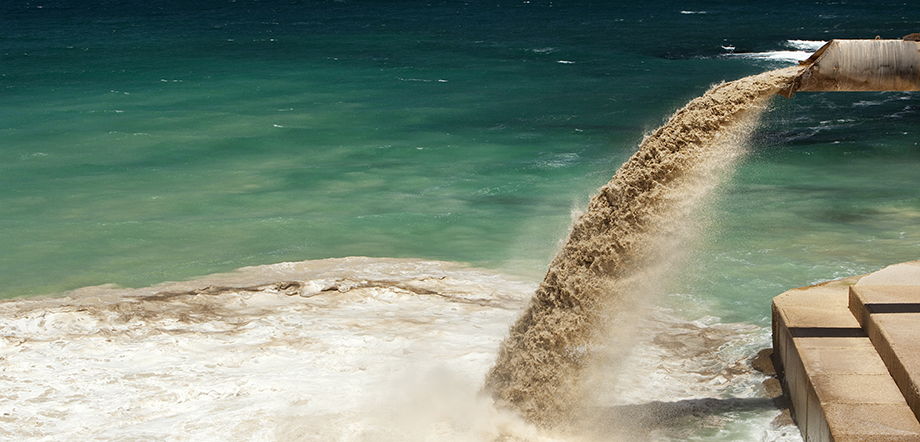Client Alerts
Trump Administration’s Navigable Waters Protection Rule and Its Impact on Ohio
May 2020

Client Alerts
Trump Administration’s Navigable Waters Protection Rule and Its Impact on Ohio
May 2020
What action was taken to define the scope of federal jurisdiction?
On January 23, 2020, the Trump Administration released the final version of the Navigable Waters Protection Rule (NWPR), which defines the waters and wetlands that are protected under the Clean Water Act. The NWPR replaces the Obama Administration’s “Waters of the United States” (WOTUS) rule. By finalizing the NWPR, the Trump Administration has completed the regulatory process launched two years ago.
The NWPR goes into effect 60 days after publication in the Federal Register, which occurred on April 21, 2020; therefore, the rule will become effective on June 22, 2020.
What is the significance of the action?
After more than four decades, the extent of federal jurisdiction under the Clean Water Act remains a contentious issue. The Clean Water Act prohibits the discharge of pollutants into “navigable waters” without a permit authorizing the discharge. The Clean Water Act defines “navigable waters” to be “waters of the United States,” a phrase that the Act does not define.
Following the 2006 decision by the U.S. Supreme Court in Rapanos v. United States, Justice Kennedy’s “significant nexus” test was used to determine which waters were jurisdictional (i.e., federally protected). Under the “significant nexus” test, any waters that, if impacted, could have a chemical or biological impact on navigable waters were deemed federally protected under the Clean Water Act. The process for determining whether streams or wetlands were protected involved a case-by-case evaluation by the Army Corps of Engineers.
The NWPR is intended to provide greater regulatory certainty than the “significant nexus” test by defining which waters and wetlands in the country are protected under the Clean Water Act. The Trump Administration’s NWPR takes a narrower view of the waters subject to federal jurisdiction than previous EPA interpretations.
For federally protected waters, businesses must obtain permits prior to discharging wastewater into such waters. In addition, before any development that impacts federally protected waters can occur, any person placing fill into either federally protected streams or wetlands must obtain a 404 permit from the Army Corps of Engineers along with a 401 water quality certification from the state or U.S. EPA.
What waters are federally protected under the NWPR?
The NWPR covers four categories of waters:
- The territorial seas and traditional navigable waters (i.e., waters currently used, waters used in the past, or waters that may be susceptible to use in interstate or foreign commerce);
- Perennial and intermittent tributaries that contribute surface water flow to navigable waters;
- Certain lakes, ponds, and impoundments that contribute surface flow to jurisdictional waters; and
- Wetlands adjacent to other jurisdictional waters. “Adjacent wetlands” is defined to mean any wetland that is connected to a jurisdictional water by (a) physically abutting the jurisdictional water, (b) inundation by flooding in a typical year from a jurisdictional water, or (c) physical separation from a jurisdictional water by a natural or artificial barrier.
Which waters are now excluded from federal protection?
The rule specifically excludes certain types of waters from regulation under the Clean Water Act, including the following:
- Groundwater (although the very recent ruling by the U.S. Supreme Court in County of Maui v. Hawaii Wildlife Fund complicates this analysis);
- ephemeral streams (streams that contain only water when it rains);
- diffuse storm water runoff;
- categories of road and farm ditches (ditches that are constructed to relocate a tributary can be jurisdictional);
- prior converted cropland (drained or otherwise manipulated for agriculture prior to December 23, 1985);
- manmade features for irrigation;
- mining, construction, or other activities located upland of jurisdictional waters; and
- wastewater treatment systems.
(85 Fed. Reg. 22,250, 22,251-22,252 (April 21, 2020).)
Does Ohio law protect wetlands and waters that are not federally protected?
Yes. Ohio law also protects categories of waters that are not protected under the NWPR. Ohio Revised Code Section 6111.01(H) defines “Waters of the state” and includes:
- “all streams, lakes, ponds, marshes, watercourses, waterways, wells, springs …” (Ohio EPA takes the position that “all streams” includes ephemeral streams that receive water only when it rains);
- irrigation systems and drainage systems; and
- underground waters (i.e., groundwater).
Based on this definition of “waters of the state,” more waterways – including wetlands, groundwater, and ephemeral streams – are protected under state law even if they are not federally protected.
What is the process under Ohio law for obtaining a permit to impact “isolated wetlands”?
Ohio was one of the few states that passed separate legislation protecting so-called “isolated wetlands.” Ohio Revised Code Section 6111.02(F) defines “isolated wetlands” as “a wetland that is not subject to regulation under the Federal Water Pollution Control Act” (i.e., the Clean Water Act). Therefore, any wetland in the state of Ohio that is not protected under the Clean Water Act is protected under Ohio law.
Ohio Revised Code Sections 6111.021 through 6111.028 set forth the process for obtaining isolated wetland permits. Depending on the size of the proposed impacts and the quality of the wetlands to be impacted, Ohio’s Isolated Wetland Permitting program has different levels of review: Level 1, Level 2, and Level 3. The higher the level, the more complicated the process and the greater justification is needed for the impacts.
Ohio EPA announces new procedures for permitting impacts to so-called “isolated streams.”
On May 7, Ohio EPA held a webinar with industry and environmental groups to discuss the interplay between the NWPR and existing Ohio law. The focus of the webinar was the procedures Ohio EPA will utilize to permit impacts to “isolated streams,” which are principally ephemeral streams.
Ohio EPA stated that there are 36,000 miles of ephemeral streams in Ohio. Because ephemeral streams are considered a “water of the state,” a permit would be needed before temporarily or permanently impacting an ephemeral stream. Ohio EPA currently does not know whether the Army Corps of Engineers or Ohio EPA would decide if a stream is federally protected or an isolated stream.
Unlike isolated wetlands, Ohio EPA does not have a separate permit allowing impacts to ephemeral streams. On May 7, Ohio EPA announced it is considering using existing permitting authority to allow impacts to ephemeral streams beginning June 22 when the NWPR goes into effect, including:
- NPDES Storm Water Construction Permit;
- 401 Water Quality Certification if the project has separate impacts to federally protected waters; and
- Isolated Wetlands Permit if the project will impact an isolated wetland. (Ohio EPA announced that an Isolated Wetland General Permit will be released for public comment on May 8 and finalized by June 22.)
Certain water features will not require a permit for impacts, including: agricultural drainage ways, roadside ditches, and grass swales. Ohio EPA did not answer how it will provide authorization for impacts to isolated streams if one of the above-listed existing permits is not utilized.
What will happen now that the long-awaited NWPR has been finalized?
On May 1, 17 states sued EPA over the legality of the NWPR, asserting the rule excludes certain waters from federal protection that should be protected under the Clean Water Act. Previously, multiple environmental groups, including the Natural Resources Defense Council, the Conservation Law Foundation, and Defenders of Wildlife, filed a separate challenge to the legality of the rule.
Similar to challenges to the WOTUS rule, court(s) may issue a stay of the effectiveness of the NWPR until the legal challenges are resolved; however, without a stay, the NWPR will become effective on June 22.
What do you need to know for projects or discharges to Ohio waters or wetlands?
With the finalization of the NWPR, fewer waterways and wetlands will fall under federal jurisdiction; however, developers, landowners, and companies should evaluate any activities that may impact non-federally protected waters and wetlands and determine if such activities require an isolated wetland permit or separate permit authorization for impacts to ephemeral streams. Due to the complexities of using one of the existing permits suggested by Ohio EPA, a careful analysis should be performed before selecting a permitting strategy, especially for any impacts to ephemeral streams in Ohio.
ADDITIONAL INFORMATION
For more information, please contact:
- Joseph P. Koncelik | 216.696.2373 | joseph.koncelik@tuckerellis.com
This Client Alert has been prepared by Tucker Ellis LLP for the use of our clients. Although prepared by professionals, it should not be used as a substitute for legal counseling in specific situations. Readers should not act upon the information contained herein without professional guidance.
